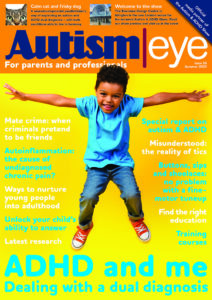Making changes to a dental surgery’s environment could help eliminate the need for general anaesthesia in children with autism, according to new research.
 Scientists at USC and Children’s Hospital Los Angeles looked at the feasibility of adapting dental environments to make them more calming for children with autism, who often show heightened levels of anxiety when going for treatment.
Scientists at USC and Children’s Hospital Los Angeles looked at the feasibility of adapting dental environments to make them more calming for children with autism, who often show heightened levels of anxiety when going for treatment.
Bright lights, the loud sounds of dental equipment and touching children in and around the mouth have all been reported as stress triggers. The study involved 22 patients with autism and 22 ‘typically developing’ children, who underwent dental cleaning in a regular dental surgery and a sensory adapted dental environment.
According to Sharon Cermak, the study’s lead author, positive outcomes were achieved when dentists made changes to the environment. These alterations included switching off overhead ‘office’ lights and instead using a dental ‘headlight’, projecting slow-moving visual effects onto the ceiling and playing soothing music. A seat cover that looked like a large butterfly with wings that wrapped around the child and provided deep-pressure hugs was also used.
Cermak said that parents have told her they have been put off taking their children to the dentist because of the high degree of stress it causes their youngsters, who “scream and cry”.
She said: “One of our long-term goals with this study is to help dentists develop protocols for their own dental clinics to see how sensory components are contributing to behavioural issues.”
She added: “I think these protocols can then be translated across the globe.”
The team hopes the research can kick-start greater collaboration between dentists and occupational therapists in treating children with autism.
Published: 16 May 2015















